The Sexual Geopolitics of Popular Culture and Transnational Black Feminism
By Janell Hobson
While the debate raged on toward the end of 2013 concerning Beyoncé’s feminist politics – especially in her sampling of celebrated Nigerian author Chimamanda Ngozi Adichie’s “We Should All Be Feminists” TED speech in her song “***Flawless,” featured on her fast-selling BEYONCÈ: The Visual Album – few have contributed conversations on the potential for a transnational black feminist consciousness that this sampling promises.
Notably, Aljazeera America mapped out the global trend of the Twitter hashtag #BlackFemMusic, which prompted a lively conversation on the importance of feminist consciousness in African American women’s music in the wake of Beyoncé’s fifth solo album release, with other artists – from Billie Holiday to Nina Simone to Missy Elliott – receiving shout outs. This globally trending online conversation in some ways parallels the transnational dialogue that is sonically created in Beyoncé’s deliberate selection of Adichie as the voice of feminism, which is also visually explored in the Black Atlantic spaces of Puerto Rico and Brazil in the music videos for “Heaven” and “Blue” respectively. Indeed, as Emily J. Lordi describes about the song and video for “Blue”: “Despite the title, Beyoncé’s own child is not the focus but is rather the catalyst for Beyoncé’s appreciation of the wider world. When I look in your eyes, I feel alive. Blue opens her mother to newness.”
It is this newness of the wider world that is found in her Diasporic videos, which capture rich colors and expansive landscapes – compared to the interior, enclosed narrow spaces of her sex-themed videos – and that does intricate work in geographically and psychically expanding cultural spaces allowed for female bonding – female friendships in “Heaven” and the bond between mothers and daughters in “Blue.” In the bonus video “Grown Woman,” the African-influenced “welele” chants, dance styles reminiscent of popular “twerk” gyrations, and the imagery of Beyoncé’s mother, juxtaposed with her own identity as both literal and “global” mother holding racially diverse babies on her lap, create a visual collage and mashup around images and sounds of black womanhood. Lyrically, musically and visually, Beyoncé crosses national borders and fuses musical cultures in this millennial expression of black feminism.
This isn’t to suggest that such cultural samplings aren’t fraught with unequal power relations, given the pop-star, multimillionaire U.S. citizen status of Beyoncé in relation to other black women locally (in her appropriation of low-income black “ratchet girl” culture) and globally (in her heavy borrowing of dance styles from Jamaica, Brazil, and the African continent). Indeed, black feminist bloggers Mako Fitts and Christa Bell of Real Colored Girls problematize what they interpret as Beyoncé’s “simplistic, pro-capitalist, structurally violent sampling of feminism,” a sampling practice earlier criticized by Racialicious guest blogger Isaac Miller who drew parallels between Beyoncé’s sampling of Third World (or Two-Thirds World) music and dance in her 2011 single and video “Run the World (Girls)” and white remix deejay Diplo, who provided her with the “Pon de Floor” dancehall remix heard in this hit song. Diplo is often accused of cultural imperialism with his well-known travels around the world for what some artists of color (most infamously Venus Iceberg X and her Ghe20 Goth1k Crew) perceive as sonic piracy of Two-Thirds World music cultures.
However, I would argue that, even though Beyoncé also travels the world like Diplo – currently with her “Mrs. Carter” world tour – her position as a black woman (and her complex integration of whiteness and blackness in her beautification practices) necessarily complicates these politics. This isn’t simply “cultural appropriation” (as with Miley Cyrus’s twerking or Katy Perry’s “geisha” performances), not least of which is due to the very different ways that white male and black female bodies move around the world – despite Beyoncé’s more obvious global and pop stardom success in comparison to Diplo. The body (geo) politic reads their personas in distinct ways, in which Diplo seems a “musical Columbus” while Beyoncé seemingly engages in Black Diasporic exchange. Of course, this represents a much longer history of what Paul Gilroy calls Black Atlantic cultural expression, political consciousness, and the complexities of African American identity within the larger spheres of the Diaspora.
Historical Precedents: Cultural Imperialism or Cultural Exchange?
Early twentieth-century African American women artists like Zora Neale Hurston, Katherine Dunham, and Loïs Mailou Jones developed a Black Diasporic consciousness as a counterpoint to the larger discourse of “black primitivism” prevalent during this era of racial debates. However, these artists also accessed the Caribbean courtesy of U.S. occupation in Haiti and other foreign policies concerning the rest of the Caribbean and Latin America. Within these geopolitical spheres of cultural imperialism and cultural exchange, the African American artist is precariously positioned in ways that perpetuate racial essentialism while simultaneously suggesting transnational solidarity.
Consider the African American pop star Josephine Baker in Paris in the 1920s. Alluded to in Beyoncé’s “Partition” music video, Baker occupied a similar position as sex symbol during her era. Improvising upon the “exotic” iconography of France’s colonial rendering of “African nudes” and “savage dance,” Baker spectacularly crafted a “modern primitive” fusing improvisatory jazz notions of the “nude savage” with her own expression of black female sexuality and her colonial “stand-in” for France’s colonial subjects throughout Africa and the Antilles. Curiously, the same year that Baker returned from a world tour, where her earlier celebrated black sexualized performances met with white supremacist resistance and rioting in places like Vienna and Budapest, women in Nigeria protested against British colonial laws, which sought to curtail their local power, with the infamous “naked protest” in 1929, also called the “Women’s War.” Just as Baker’s nude “danse sauvage” met with resistance in different European cities beyond Paris, the Nigerian women’s naked protest – which is a traditional form of African women’s resistance that relies on their embodied powers of “cursing” – was violently subverted by a white colonial gaze that recast the women as hypersexual, indecent “primitives” and “savages.” This fear of black sexuality similarly framed the public reception of Josephine Baker and black jazz musicians, whose culture would later be denounced in Nazi Germany’s “Degenerate Art” exhibit in 1937, just as the culture was denounced earlier in the U.S. as “devil’s music” (and much like hip-hop, ratchet culture, and twerking are denounced today).
Another critical moment in 1929 also took place, which is worth remembering. Here I refer to the Universal Negro Improvement Association and African Communities League international convention that Marcus Garvey held in Jamaica, after he was deported from the United States, where he had been imprisoned while his wife Amy Jacques Garvey sustained their Pan-Africanist philosophy through her editing of The Negro World newspaper in Harlem. This Black Diasporic consciousness would become especially significant in the years leading up to the U.S. Civil Rights movement, which influenced and was equally influenced by various anticolonial movements in India, South Africa, Kenya, Cuba, and Brazil. These politics certainly seeped into the popular spheres of black “soul power” music of the 1970s, which had a global reach and subsequent impact on hip-hop.
In Nomadic Identities: The Performance of Citizenship, May Joseph wrote this about black soul music: “Operating ambivalently within the seductive and exploitative boundaries of U.S. imperialism – consumerism being the new face of imperial expansion – soul prompted an international as well as local resurgence of Pan-African desire…The circulation of Afro-American popular culture through dramatically different ideological and geographical terrain beyond its national context foregrounds the complexities of transnationalism” (39). Despite the perpetuation of consumer culture and capitalist endeavors – which Beyoncé’s pop-star status and narratives promote – there is still the potential for a complex transnational conversation. Black popular music and dance, which created viable spaces for cultural and embodied resistance in the past, still has this potential today.
Moreover, there are other complex questions to consider. How much of African American culture is simply “U.S. culture,” especially given the way African Americans are constantly positioned as “outsiders within,” to paraphrase Patricia Hill Collins? How much of this culture is “already global”? Consider hip-hop, one of the most successful U.S. global exports with its roots in the South Bronx already expressing the transnational fusion of cultures represented by African Americans living (and partying) in close proximity with other black and immigrant communities from the Caribbean in these low-income urban locations. Do such pop stars as Beyoncé, Rihanna, and Nicki Minaj (the latter two with roots in Barbados and Trinidad respectively) and their engagements with Jamaican deejay and dancehall traditions, part of hip-hop’s origins, represent “cultural appropriation” or the reclamation of black migratory roots returning home?
Is “Sistahood” Global? Mapping Transnational Black Feminism
In her essay, “Globalization of the Local/Localization of the Global,” Indian feminist Amrita Basu describes the importance of women of color in reshaping U.S. feminist discourse, which she believes reduced tensions in the sphere of global feminist movements. As she posits, “Recall that some of the earliest and most important critiques of feminist universalism came from African American and Latina women in the United States. Years later, in preparation for the 1995 Beijing women’s conference, American women of color formed a coalition with women from the South and drafted language for the platform document about women who face multiple forms of discrimination” (71). Such transnational developments can also be traced beyond the political spheres of NGOs, UN international conferences, and activist work and policy-making. We could argue that the popular sphere contributes to these narratives by reimagining these global and transnational connections – especially in articulations of women’s power, sexual desire, and questions around solidarity and how our different rhetorics travel across academic, artistic, and grassroots divides.
Engaging the popular doesn’t always have to mean a distraction from the larger global politics of women’s oppression and resistance to these systems. Rather, popular culture makes legible these struggles – precisely because they enter into those spaces of leisure, fun, and pleasure. It is these spaces where we need to be reenergized from our daily struggles and to imagine and create different dreams for ourselves and the world at large – whether those visions are affirmed or contradicted in popular narratives.
Just as Queen Latifah created a transnational dialogue with London-based emcee Monie Love and addressed the South African apartheid struggle in the video for her nominal “Ladies First” hip-hop feminist anthem, the global stage performances of strip culture “twerking” or Jamaican dancehall “dutty wine” – incorporated in Rihanna’s performances and in Beyoncé’s Super Bowl performance of “Baby Boy” (infused with Hindu goddess imagery of Durga and Indian pop music samplings) – make it possible to disrupt white supremacist visions of female beauty, sexuality, and feminist politics. There is a reason why mainstream American audiences are made uncomfortable by the “too sexy” performances that such booty-emphasizing dances convey. The (white) body politic is being challenged and such spectacles – coupled with feminist rhetorics not emerging from the institutional sphere of academic (usually white) feminism – pushes the boundaries around which bodies, which aesthetics, and which politics are valid. Sampling Nigerian-born Adichie alongside her African, Caribbean, and Latin-influenced music and videos, Beyoncé and other women of color artists doing similar work continue in a tradition of Diasporic and transnational articulations of black feminism. It is a far from “flawless” version of sisterhood but one that nonetheless suggests the possibilities and potential for transnational solidarity.
_________________________________________________________
 Janell Hobson is an Associate Professor in the Department of Women’s, Gender, and Sexuality Studies at the University at Albany. She has authored two books, Body as Evidence: Mediating Race, Globalizing Gender (2012) and Venus in the Dark: Blackness and Beauty in Popular Culture (2005), and regularly blogs and writes for Ms. Magazine, including the cover story, “Beyonce’s Fierce Feminism,” in spring 2013 issue.
Janell Hobson is an Associate Professor in the Department of Women’s, Gender, and Sexuality Studies at the University at Albany. She has authored two books, Body as Evidence: Mediating Race, Globalizing Gender (2012) and Venus in the Dark: Blackness and Beauty in Popular Culture (2005), and regularly blogs and writes for Ms. Magazine, including the cover story, “Beyonce’s Fierce Feminism,” in spring 2013 issue.

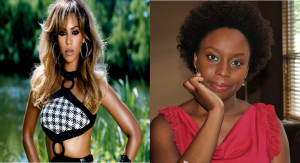
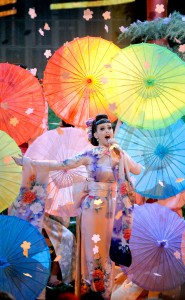
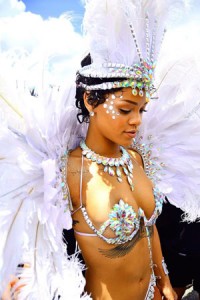
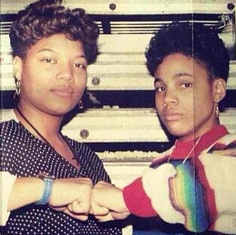


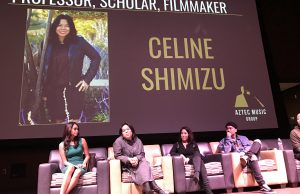
Pingback: Woman Battling Breast Cancer Criticized For Tweeting & Blogging About Her Illness | sexynewz.com
Pingback: Sunday feminist roundup (19th January 2014) | feimineach